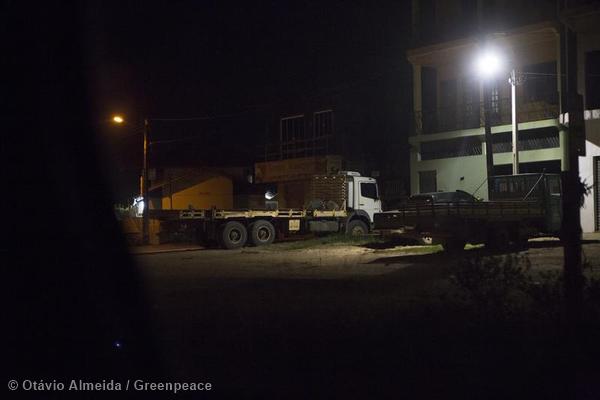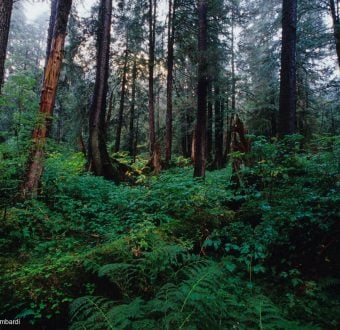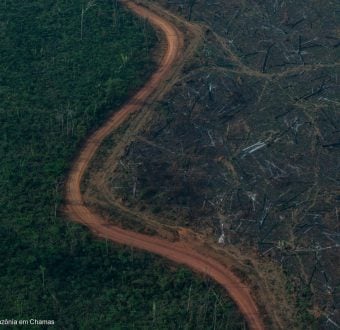Deep in the Amazon, Greenpeace went undercover over the last few weeks using covert GPS locators, to monitor logging trucks shuttling between illegal logging camps and saw mills that export to the U.S. and Europe. During the day, empty logging trucks drove into the rainforest and when night fell, they traveled from illegal logging camps to sawmills, avoiding surveillance. Greenpeace’s team observed timber laundering in action as the illegal logs went into sawmill yards and left as sawn lumber with official documentation to cover the criminals’ tracks.
Previously, using satellites and forestry permit maps, researchers had estimated that in Par state – Brazil’s largest timber producing and exporting state – approximately 78% of logging is done illegally. This past May, Greenpeace published an investigation demonstrating via field visits, how illegal timber is easily laundered through Brazil’s fundamentally flawed timber control system. Research launched today, that took place over the last few weeks has offered a new perspective as GPS beacons revealed in real time how illegal timber makes it out of the shadows and into the marketplace.
When reviewing which properties the sawmills claimed the timber originated from, once again Greenpeace observed the all too common scams that loggers use to cover up their deception. There were cases in which sawmills claimed to have been supplied thousands of cubic meters of timber from specific places, but satellite imagery revealed that no or little logging had occurred on these properties. Greenpeace also observed forest estates listing the volumes of rare and expensive species like ip at levels five times higher than typically found in the region. Such exaggeration of the numbers could indicate that the property owner lied to authorities in order to receive timber permits that would cover up valuable illicit timber from other places.
The Odani sawmill under embargo by the Brazilian Government, was supplied by one of the monitored logging trucks up to four times a day. This sawmill regularly supplies the Brazilian timber exporter Ipezai who in recent months has shipped timber to U.S. companies Sabra International, Timber Brokerage International, East Teak Fine Hardwoods, and its sister company, Thompson Mahogany.
The U.S. Lacey Act bans the trade of illegal timber and requires companies to practice “due care” to ensure that timber traded is not illegal. When purchasing Brazilian timber, official government documentation does not, on its own, ensure the timber is legal considering the high likelihood of illegality and the structural flaws that make it easy to launder crime.
Being aware of the risks in buying from Brazil, U.S. importers need go beyond paperwork in order to ensure that they are not violating the law and trading in forest crime.




